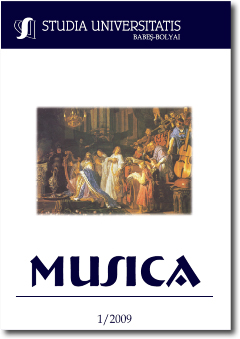CINEMA MUSIC IN THE SILENT MOVIE ERA
CINEMA MUSIC IN THE SILENT MOVIE ERA
Author(s): Aaron FazakasSubject(s): Music
Published by: Studia Universitatis Babes-Bolyai
Keywords: film music; silent movie; Lumière; cinema; pianist; organist; skills;
Summary/Abstract: In the silent movie era, the tendency of using original music specially written for a certain motion picture was abandoned, probably due to its high costs, and the creation and use of musical collages of preexisting cultured and entertainment music was preferred instead. The cinema musician, in his attempt to follow (R-Receiver) and illustrate (E-Transmitter) by musical accompaniment the cinematographic projections, encountered multiple problems specific to this preoccupation. The success of this activity would depend on the optimal correlation of a number of general skills (intelligence, creativity, a developed emotional sensitivity, spirit of observation, visual memory etc.) and special artistic skills (rhythmic sense, melodic, harmonic, polyphonic, timbral, and inner hearing etc), on deepening the musical knowledge (both in theory and performance), as well as on certain extramusical skills (knowledge and intuition of the human psychology, psychological intuition, artistic emotion). An inadequate musical theme, stranger to the action, could easily ruin the effect of the movie, stultifying the hero in his most dramatic moments, causing guffaws from the audience. The producers were quick to understand this danger, and consequently, a lot of movies were distributed together with lists containing suggestions about the musical fragments these were to be accompanied by. The classic repertoire definitely represented a never-ending source of music in creating the collages. The careful study of successful works was an optimal method of identifying and selecting passages which could be universally applicable in various circumstances, just as the texts of many arias could easily be associated with certain thoughts and emotions. The music of Verdi, Rossini, Wagner, as well as Tchaikovsky, Liszt or Beethoven was amongst the most frequently quoted in the motion picture theaters. By the diversity of the musical accompaniment, the motion picture theater of the first quarter of the century offered continuous musical education to the large audience.
Journal: Studia Universitatis Babes-Bolyai - Musica
- Issue Year: 54/2009
- Issue No: 1
- Page Range: 129-154
- Page Count: 26
- Language: English

